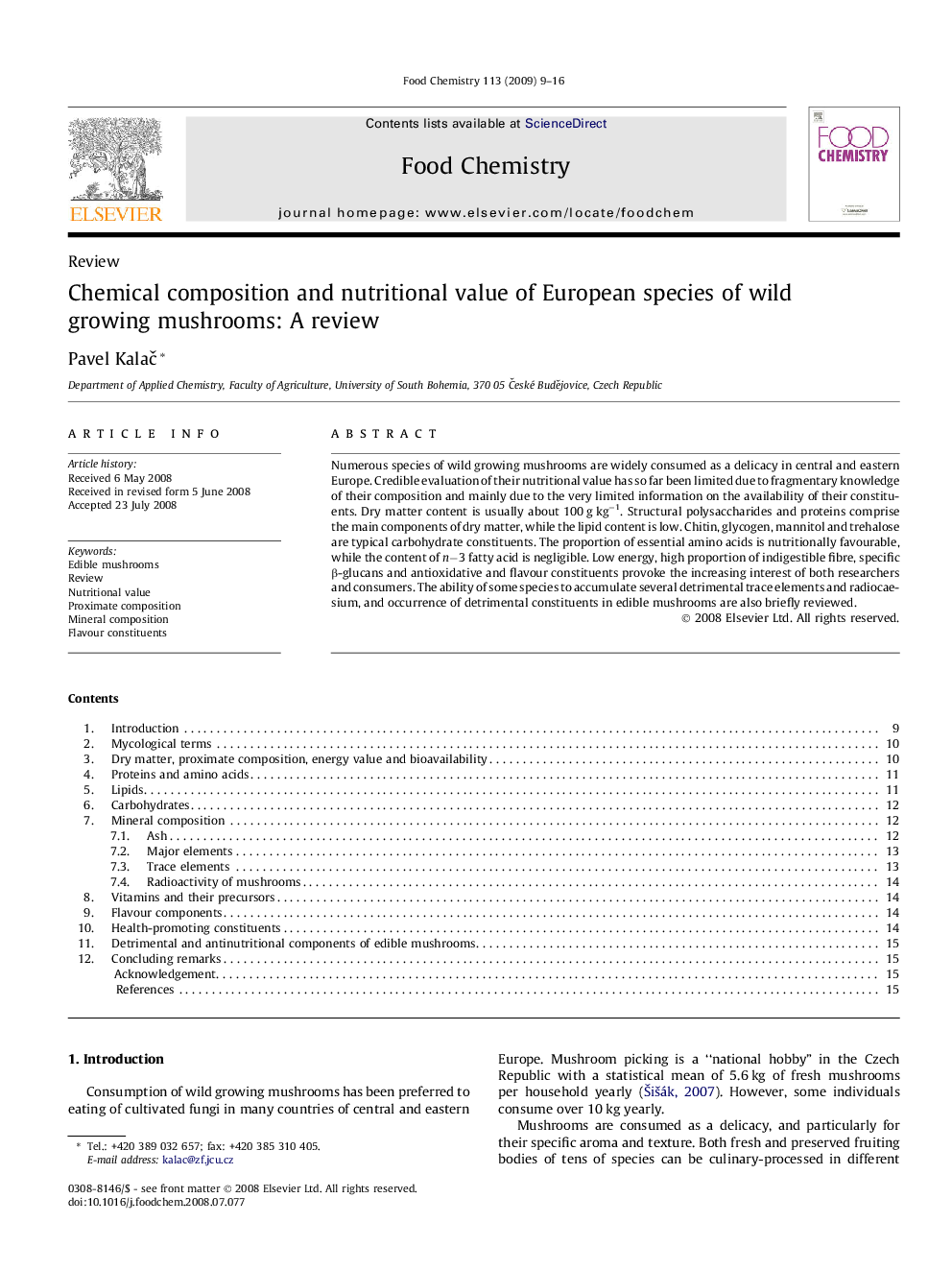| Article ID | Journal | Published Year | Pages | File Type |
|---|---|---|---|---|
| 1186329 | Food Chemistry | 2009 | 8 Pages |
Numerous species of wild growing mushrooms are widely consumed as a delicacy in central and eastern Europe. Credible evaluation of their nutritional value has so far been limited due to fragmentary knowledge of their composition and mainly due to the very limited information on the availability of their constituents. Dry matter content is usually about 100 g kg−1. Structural polysaccharides and proteins comprise the main components of dry matter, while the lipid content is low. Chitin, glycogen, mannitol and trehalose are typical carbohydrate constituents. The proportion of essential amino acids is nutritionally favourable, while the content of n−3 fatty acid is negligible. Low energy, high proportion of indigestible fibre, specific β-glucans and antioxidative and flavour constituents provoke the increasing interest of both researchers and consumers. The ability of some species to accumulate several detrimental trace elements and radiocaesium, and occurrence of detrimental constituents in edible mushrooms are also briefly reviewed.
